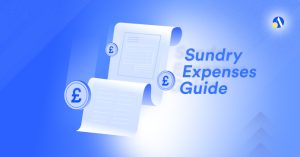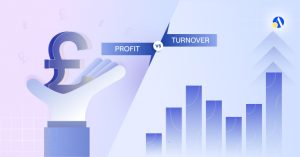What does 'overheads' mean in a business context? For small business owners and entrepreneurs, this simple term has a significant impact on operational efficiency and financial health. Overheads, or overhead costs, refer to the ongoing costs necessary to operate a business that are not directly related to the production of goods or services. These costs, while not always obvious, can influence everything from pricing strategies to long-term profitability.
If you've found yourself asking questions like "What do you mean by overheads?" or "How does overhead affect my taxes?", you're in the right place. This guide will answer all your questions, provide examples of overhead costs, and highlight their importance in business operations. By the end, you'll understand how managing overheads effectively can save you money and boost your bottom line.
What Are Overheads?
Overheads are the recurring expenses businesses must pay to keep their day-to-day operations running, but they aren’t direct costs associated with producing a product or service. Unlike manufacturing expenses like raw materials or factory staff wages, overheads are indirect costs. Think of them as the supporting framework that allows your business to function efficiently.
Examples of Overhead Costs
Overheads vary based on the type of business you run, but common examples include:
- Rent or office space costs (e.g., a jeweller’s shop or a company’s head office)
- Utility bills like electricity, water, and gas
- Employee salaries for roles not directly tied to production, like administrative or management staff
- Business insurance
- Marketing and advertising
- Accounting and legal services
- Cleaning and maintenance for business premises
- Depreciation of office equipment
These are just a few examples of overheads that businesses deal with. Since businesses come in all shapes and sizes, owners must categorise their unique expenses carefully.
Types of Overheads
Understanding the different categories of overheads is crucial to managing them effectively. Generally, overheads fall under the following types:
Fixed Overheads
Fixed overheads are consistent and predictable, meaning they don’t fluctuate with production or sales volume. These costs remain the same whether you're having a profitable or slow month. Examples include:
- Rent
- Insurance premiums
- Salaries for permanent staff
- Subscriptions like software services or website hosting fees
Why it matters: Fixed costs are easier to budget for but must be monitored to ensure they don’t consume too much of your revenue.
Variable Overheads
Variable overheads change depending on business activity or production levels. These costs rise during busy periods and decrease when business slows down. Examples include:
- Raw materials for increased production
- Marketing campaigns during peak seasons
- Utility costs (e.g., a restaurant’s water usage depending on customer volume)
Why it matters: Variable costs require careful forecasting, as they can quickly spiral if business activity exceeds expectations.
Semi-Variable Overheads
Semi-variable costs are a mix of fixed and variable components. For instance, you might pay a set monthly amount for electricity but incur additional charges for exceeding the agreed energy usage. Examples include:
- Utilities with base fees and usage charges
- Phone or data plans with limits
- Maintenance contracts with fixed retainer fees and extra costs for additional issues
Why it matters: Semi-variable overheads offer flexibility but require precise tracking to avoid unnecessary charges.
Overheads and Taxes
Did you know that overheads can influence your tax obligations? Many overhead costs are classified as allowable expenses, meaning you can deduct them from your business’s taxable income. This can lower your overall tax bill and free up cash flow for other operations.
Here are some key points to remember about overheads and tax:
- What Are Allowable Expenses? These are overheads deemed essential to running your business. Examples include rent, utilities, insurance, and even some legal fees.
- Claiming Tax Relief: For eligible overheads, you can claim tax relief when filing your business taxes. This essentially reduces the amount of taxable income, saving your business money.
- Track Every Expense: Proper documentation and categorisation are crucial. Without detailed expense records, you might miss out on claiming deductions.
Understanding how overheads affect your taxes ensures you’re compliant with HMRC regulations while maximising deductions.
Why Managing Overheads is Essential for Success
Overheads may not contribute directly to product creation, but they impact your overall profitability. Here’s why managing these costs is essential:
- Profitability: Overheads reduce your profit margins. The higher your overheads, the more revenue you need to cover them and stay profitable.
- Pricing Strategies: To avoid underpricing your products or services, factor in both direct production costs and overheads. Adjust your pricing model to cover all costs while maintaining value for customers.
- Cash Flow Management: Unchecked overheads can disrupt cash flow, making it harder to meet operational needs, pay employees, or take risks.
- Competitive Edge: Efficient overhead management allows you to lower prices or reinvest savings into growth areas like marketing or innovation.
How Debitam Can Help You Manage Overheads
Managing your overheads doesn’t have to be overwhelming. Debitam offers specialised tools and services to simplify your financial management, so you can focus on what truly matters—growing your business.
Here’s how we can help:
- Comprehensive Tax Support: We’ll ensure your overheads are properly accounted for, helping you claim every possible tax relief and deduction.
- Budget Insights: Our expert accountants provide tailored advice on optimising overhead costs and improving cash flow.
- Ease of Use: With user-friendly tools, you can monitor your finances in real-time, keeping track of both fixed and variable costs.
- Professional Guidance: Our team is always on hand to answer your questions, freeing you from the complexities of financial management.
Take the First Step
Understanding and managing your business’s overheads is crucial to its financial health. With the right strategies—like classifying, tracking, and optimising costs—you can turn overhead management into an advantage.
Want to take control of your overhead costs and maximise your profitability? Contact us today for expert assistance. Together, we can make your business more efficient and financially resilient.













